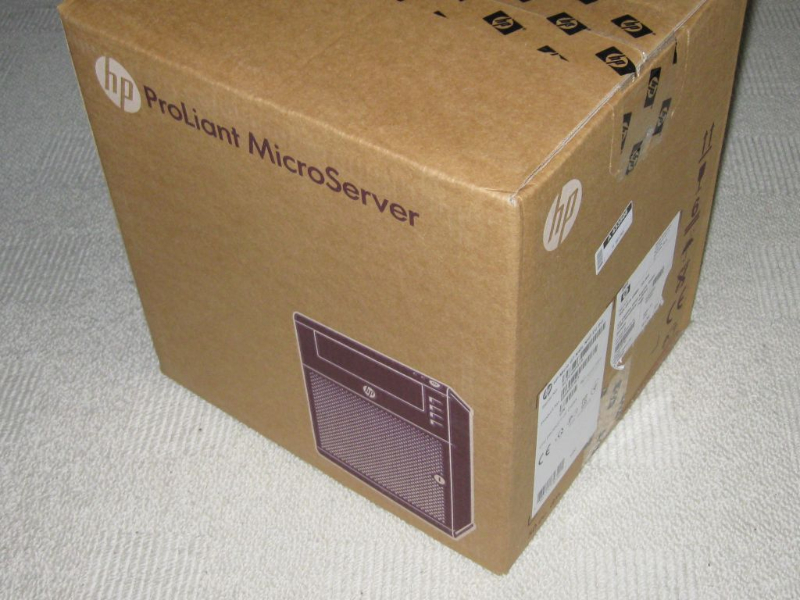
- AMD ATHLON II NEO N36L VMWARE ESXI 6.7 HOW TO ENABLE THE
- AMD ATHLON II NEO N36L VMWARE ESXI 6.7 DRIVERS IT NEEDED
The last quarter of 2010 wasn’t a great time for WHS enthusiasts, with HP dropping the MediaSmart server range and Microsoft removing Drive Extender from Vail combining to dampen the spirits of all but the most diehard WHS fans.The simple answer is nested ESXi. Per caso ce la fa anche a fare play di mkv o bd in. AMD Athlon II NEO N36L 1.3 Ghz dual-core processor 1GB (1x1GB) Standard/8GB Maximum DDR3 Unbuffered ECC memory (only 2 DIMM slots) Embedded AMD SATA controller with RAID 0/1, Embedded AMD eSATA controller HP 160GB 3G SATA Non-Hot Plug 7,200rpm 3.5 ETY Hard Drive (total of LFF 4 drive bays) Embedded HP NC107i PCI-Express Gigabit Ethernet Server Adapter HP 200w Non-Hot HP ProLiant MicroServer - tower ultra micro - 1 x Athlon II Neo N36L / 1.3 GHz Si trova anche a meno di 180 su trovaprezzi, non mica male.
Amd Athlon Ii Neo N36L Vmware Esxi 6.7 How To Enable The
Designed primarily for the small office rather than the home, the ProLiant looks to be a worthy replacement for the MediaSmart server hardware.I say hardware, as the ProLiant doesn’t ship with an operating system, and a regular copy of WHS from Microsoft won’t come with all the extra bells and whistles that put MediaSmart servers head and shoulders about all the other Windows Home servers. So you should end up with 3 nested ESXi 5.HP have thrown us as all a partial home server lifeline in the shape of the ProLiant MicroServer. And all you need to do is the following:-Add vhv. This explains how to enable the hidden Guest OS settings.The hardware in my lab consists of 1 HP ML115 G5 (AMD Opteron 1354 and 8GB RAM) 1 HP Microserver (AMD Athlon II Neo N36L and 8GB RAM). 1 HP ML115 G5 (AMD Opteron 1354 and 8GB RAM) 1 HP Microserver (AMD Athlon II Neo N36L and 8GB RAM) William Lam has wrote an excellent article on how to run nested ESXi within vSphere 5.0.
You never have to scratch around looking for the screws, as they will always be securely located within the server. Instead of supplying them in a plastic bag, HP have bolted them and their torx key in place inside the front door. Unlike the screwless caddies HP used on the MediaSmart, disks need to be fastened in place with screws.One very good feature is the location of these screws. Opening the front door reveals the four SATA drive caddies, and exposes the motherboard which can easily be removed by undoing the two light-blue thumbscrews at each side.The MicroServer ships with a 160gb 7200 rpm Seagate disk (I didn’t realise they still made them that small anymore) inside a simple design drive caddy, which feels secure and robust enough to hold the disk securely in place inside the server. I would imagine the idea of this is to allow users in a busy office to connect and disconnect USB hard disks without having to disturb the server by fishing around on the rear for spare sockets.The front is completed by an optical drive blanking plate and a lockable front door. Also we find a big illuminated HP logo that will change colour to indicate the servers status.Unusually for a home server (sorry this isn’t a home server is it) it has more USB ports on the front than the back.


Amd Athlon Ii Neo N36L Vmware Esxi 6.7 Drivers It Needed
Unlike the installation of WHS, Windows 7 64-bit had no problems locating and installing all the drivers it needed for the ProLiant’s hardware.The server performed reasonably well under Windows 7, although I found the redrawing of the desktop and screen updates to be a little laboured and sluggish, but otherwise everything seemed acceptable as a low-end desktop PC.I would expect these graphical shortcomings to be resolved by adding a proper PCI-e graphics card and some extra RAM, should you wish to use this as a desktop PC. Quick, simple and it is almost like that USB port was installed specifically for FreeNAS.FreeNAS works very nicely on this server, and could be a perfect solution for some users.Finally I installed Windows 7 64-bit onto the ProLiant to see what its performance would be like as a desktop PC or a Windows Media device. This option installs the embedded OS onto USB flash memory, and leaves the hard disks dedicated to storage.


 0 kommentar(er)
0 kommentar(er)
